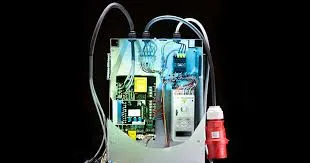The Importance of Hazard Marking Tape in Safety Management
In any workplace or public environment, safety is of paramount importance. One of the most effective yet often overlooked tools in maintaining safety standards is hazard marking tape. This brightly colored tape serves multiple purposes, including identifying hazards, guiding movement, and ensuring compliance with safety regulations. In this article, we will explore the significance of hazard marking tape, its different types, and best practices for its use.
What is Hazard Marking Tape?
Hazard marking tape is a type of adhesive tape designed to alert individuals to potential dangers in their environment. Typically made from durable materials, this tape comes in vivid colors and patterns, such as bright yellow, red, or black and yellow striped, which immediately draw attention. The stark visibility of hazard marking tape helps convey warnings even from a distance, making it an invaluable asset in various settings, from industrial sites to office spaces.
The Role of Hazard Marking Tape in Safety
One of the primary roles of hazard marking tape is to delineate dangerous areas. For example, it can mark the edges of stairs, restricted zones, or locations where heavy machinery operates. By visibly indicating these hazards, the tape reduces the likelihood of accidents, ensuring that employees and visitors remain aware of their surroundings.
In addition to marking hazards, this tape is also essential for creating designated pathways. In environments such as warehouses or factories, clear pathways must be established for pedestrian and vehicular movement. Hazard marking tape provides a visual guide that helps prevent collisions while promoting an organized flow of traffic. Furthermore, its use in creating boundaries for storage areas or equipment zones enhances overall safety by keeping walkways clear.
Types of Hazard Marking Tape
There are several types of hazard marking tape available, each serving different purposes. Some of the most common types include
1. Solid Color Tape Used to mark out areas with specific hazards, such as electrical panels or chemical storage rooms. Colors like red often indicate a high level of danger, while yellow serves as a warning.
hazard marking tape

2. Striped or Checkered Tape These patterns are excellent for grabbing attention and can be used in areas where a more pronounced warning is needed. The contrasting colors make it impossible to ignore.
3. Glow-in-the-Dark Tape This type of tape is particularly useful for emergency exits and routes. In low-light situations, it ensures that individuals can locate safe paths, which can be critical during power outages or emergencies.
4. Floor Marking Tape Specifically designed for use on floors, this tape is ideal for creating lines for walkways or zones in warehouses, making it very practical for guiding foot traffic.
Best Practices for Using Hazard Marking Tape
To ensure that hazard marking tape is effective, several best practices should be followed
- Proper Placement Tape should be placed at eye level where possible, and directly at the hazard. Ensure it is used consistently across all areas of potential danger.
- Regular Maintenance Over time, hazard marking tape may wear down due to foot traffic or environmental factors. Regularly inspect and replace tape as necessary to maintain visibility.
- Clear Communication Complement the use of hazard marking tape with proper signage. This additional communication can reinforce the message and ensure that everyone understands the specific hazards present.
- Training and Awareness Educate employees about the significance of hazard marking tape and encourage them to remain vigilant regarding these markings. A knowledgeable workforce can help foster a safer environment.
In conclusion, hazard marking tape is a simple yet effective safety tool that plays a crucial role in maintaining safe working and public environments. By clearly identifying hazards, guiding movement, and enhancing overall awareness, it contributes significantly to accident prevention. Embracing the use of this vital resource not only reflects a commitment to safety but also promotes a culture of care and responsibility.
-
XIANGFAN Rubber Tape-Ultimate Solutions for All Your Insulation NeedsNewsJun.24,2025
-
XIANGFAN Rubber Tape-Protection for Industrial and Residential ApplicationsNewsJun.24,2025
-
XIANGFAN Rubber Tape: Superior Safety and Sealing for Demanding EnvironmentsNewsJun.24,2025
-
XIANGFAN Rubber Tape: Reliable Solutions for Every Electrical ChallengeNewsJun.24,2025
-
XIANGFAN Electrical & Industrial Tape: Powering Reliability Across IndustriesNewsJun.24,2025
-
XIANGFAN Electrical & Industrial Tape: Excellence in Every ApplicationNewsJun.24,2025
